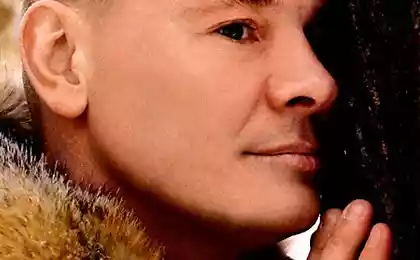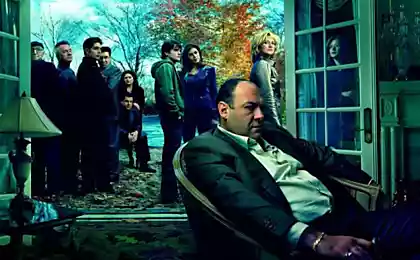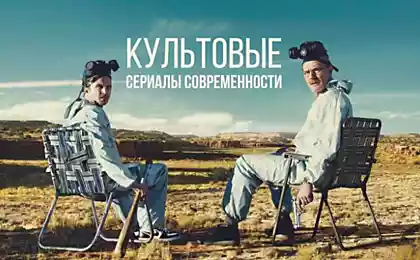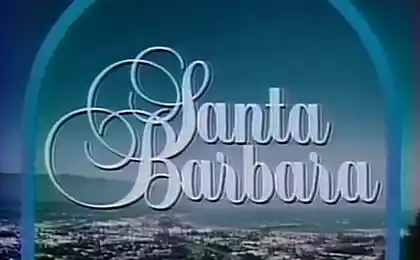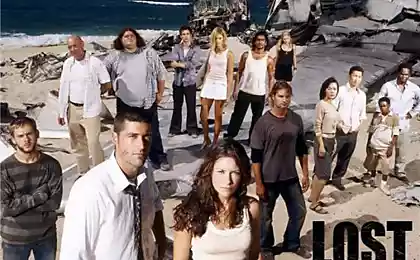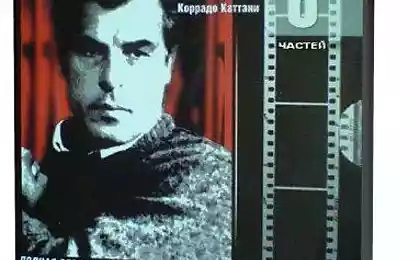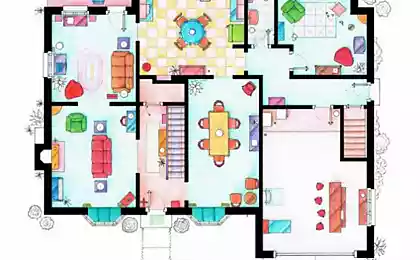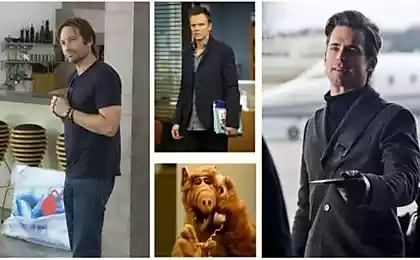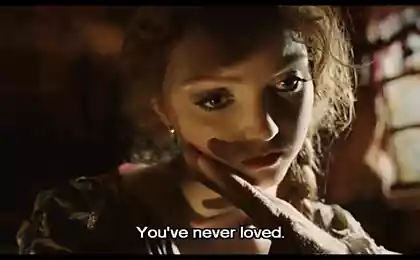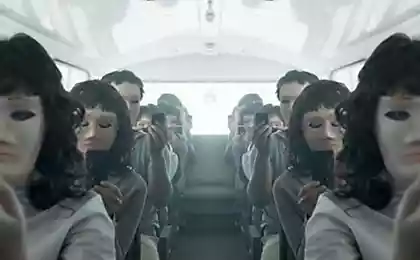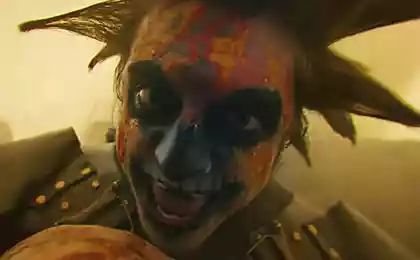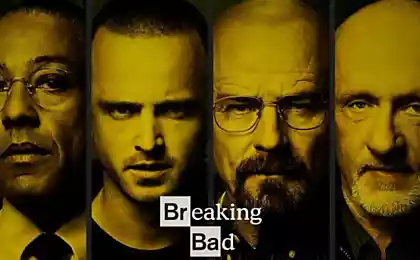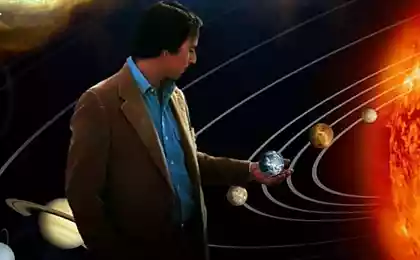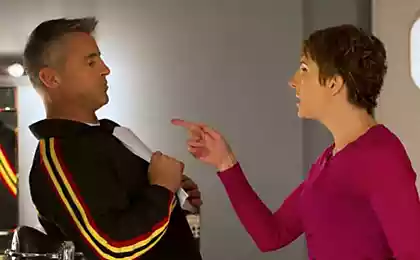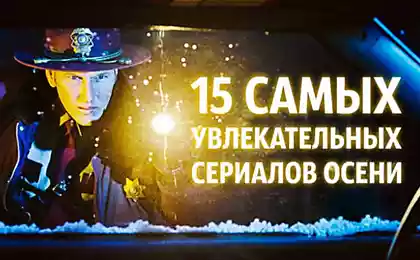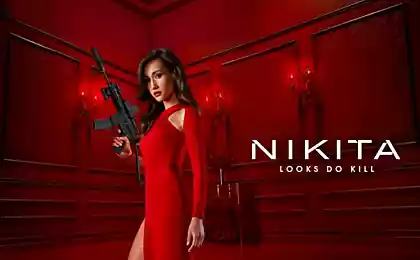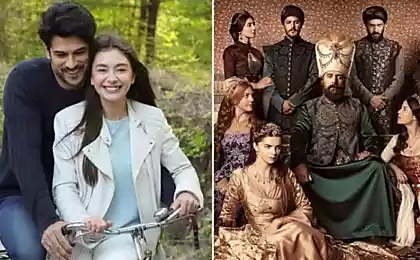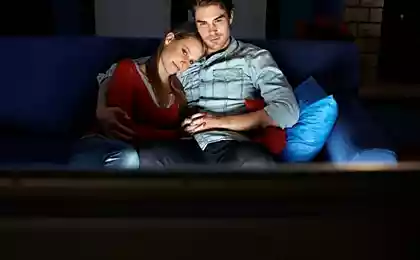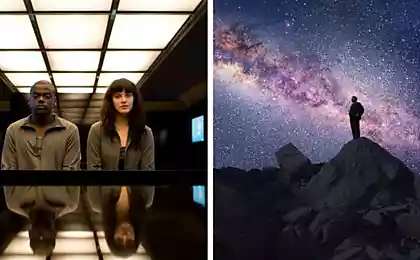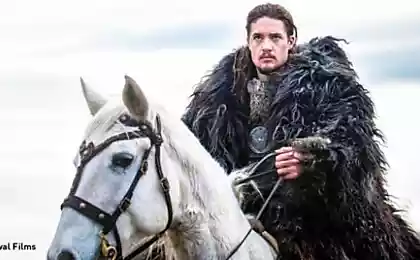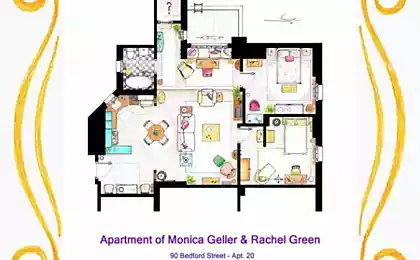933
The series "Breaking Bad"
"Breaking Bad" (eng. Breaking Bad) - an American television series created by Vince Gilligan. The plot of the series tells the story of the Doctor of Chemistry, who works as a teacher of chemistry at school: learning that he had cancer of the lungs, he begins to manufacture methamphetamine for the sake of securing the future of his family. The action of the series takes place in Albuquerque, New Mexico.
The series received the "Emmy" in 2008, 2009, 2010, 2012 and 2013, including the prestigious "Best Actor in a Drama Series" (2008, 2009, 2010) and "Outstanding Drama Series" (2013). Currently the show is over, and consists of 62 episodes.
In addition to the great game of actors, cool script, and other factors that allow us to say that the film came to like it, I literally crush on operator solutions that have been used in "all serious". The credit for this major operator show - Michael Slovisa.
Will be 30 photos + text source.
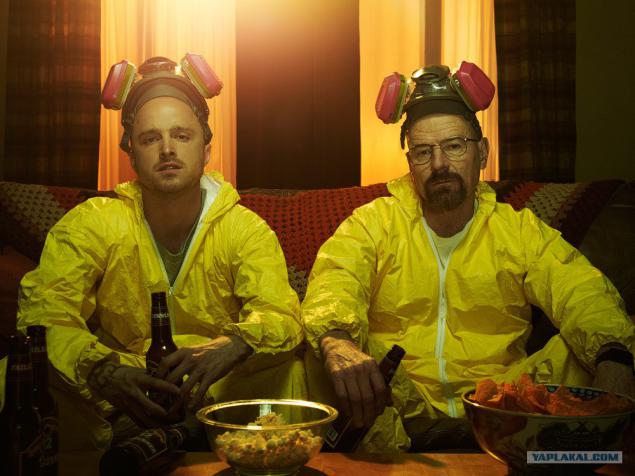
Michael Slovis (Michael Slovis) started taking pictures as a teenager, and once won a photo contest on the small-town «New Jersey State Teen Arts Festival». The victory gave him the opportunity for further training at the well-known program fotoremeslu Rochester Institute of Technology. Later Slovis studied cinema at New York University and began to look for jobs on the set of a movie lighter, as well as various advertising and television commercials.
Since 1995 Slovis (already as the chief operator) takes off as an independent film and television projects and theatrical films. After returning from Europe after the injury, which occurred in 2001, Michael decided to find a job closer to home and family. And he was lucky to get a survey serials for the company Paramount / NBC. Two and a half years, Michael was the operator of the series «CSI: Crime Scene Investigation." For this work, in 2006 he received the "Emmy" for outstanding cinematography, and just a year later was nominated again. Since 2008 Slovis began work with the TV channel AMC, the second season by becoming the main operator of the series "Breaking Bad," for which he earned two nominations "Emmy". By the way, in some episodes, Michael made and as a director. In 2010 Slovis received an invitation to join the American Society of Cinematographers, which could not refuse. Slovis lives in New Jersey with his wife Maria. They have three grown children, the youngest of whom are now in college.
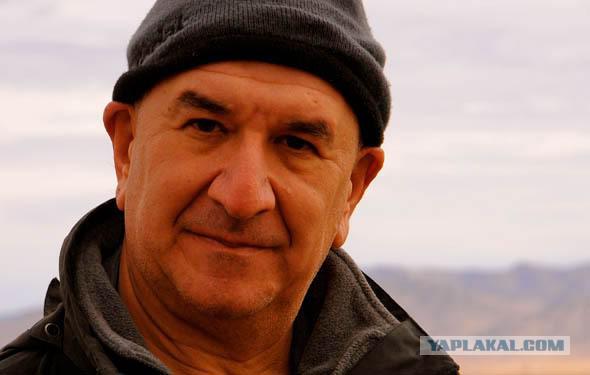
Q. In the last season are used any different from the previous season of cinematic imaging methods?
A. Vince (Vince Gilligan - writer, director and producer of the series - ed.) And I am always inclined to shoot in the gloom. And in terms of the full palette we shoot really dark. This does not mean that the viewer sees nothing. This means that we have a lot of black in the picture. This gives the frame contrast. One of the advantages of filming the show for five or six years - that we all know who these characters are. Thus, I do not have to cover their faces all the time. If a bald man about six feet tall comes in to the room, you know, it's Walter Uyat. We all know who these people are, so it gives me a lot more freedom than I had at the beginning of filming.
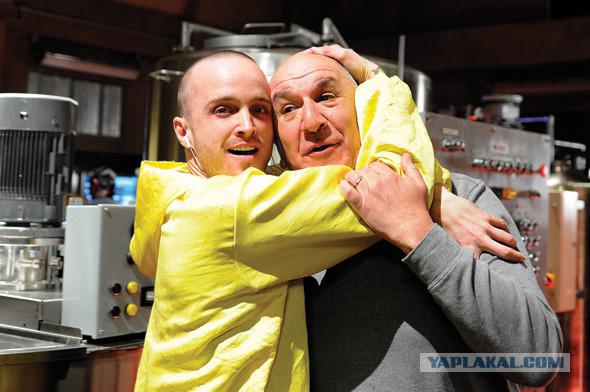
Q. Over the years, "Breaking Bad" was recognized for its "firm" carrier-chips. This broad general plans in the desert, unusual angles POV (Point of view shot. Did not find the Russian analogue of the cinematic term. Simplifying, this is the moment in the movie when you see what is happening through the eyes of the main character. Many of this technique is familiar to porn films genre gonzo - ca. .) and other techniques. You have a list of what you need this to pay tribute in the final episodes?
A. It's a good topic and I could talk about it for hours. The fact is that I do not always find appropriate techniques such shooting. I think they work best when used sparingly. If they are constantly appearing, you kind of have to expect them to start and the effect of the impact will be much less. But if POV appears in the frame at a time when you least expect it - it's really worth it.
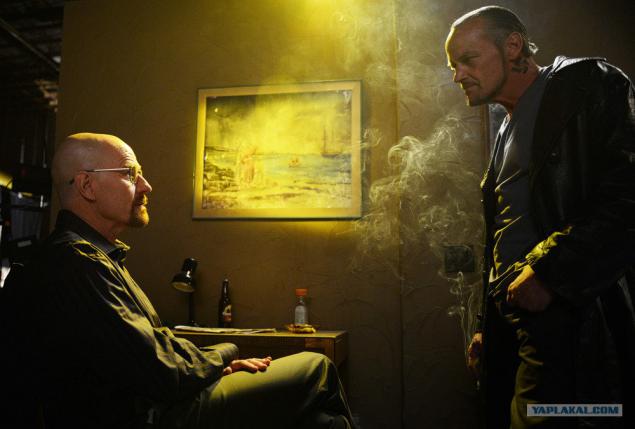
Q. Why on television nobody makes films such as the level of "Breaking Bad»?
A. It's not that no one else so can not, rather it is we are doing it very well. And we are doing so well because of the good scenario. As the main operator is - what I'm interested in. I want people to see the film and said it was really nice, but I do not want people to look and say, "Stop, here a beautiful picture dominates sense!" What I love about working on this show - is his action. The storyline is so strong, so completely designed and made on a solid basis of the drama that it is opposed to even a very strong pictures. And that's why I'm doing it wrong. Sometimes, I worked on the show, where it was necessary to shoot at a very weak script. And it's very boring.
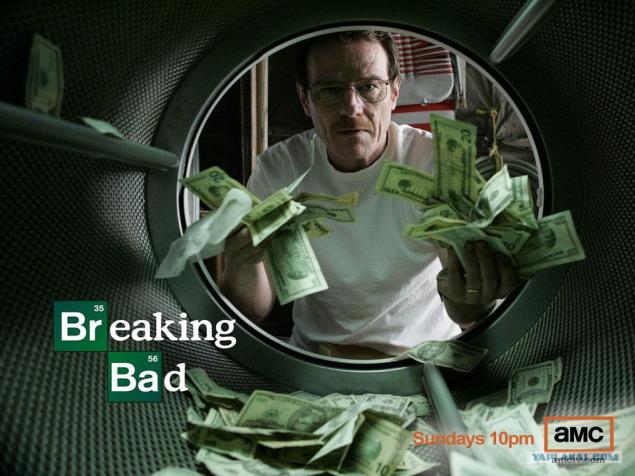
B. After five seasons of "Breaking Bad," Can you name the most successful stage and perspective?
A. You are asking me to pick a favorite child. I can not do this! Many people have tried, but ... In fact, one of my favorite moments - this is one of the most simple and it does not use anything special with photographic point of view. It was the episode where we were shooting a close-up Brian (Bryan Cranston - actor, singer starring. - Approx), when he allowed the heroine actress Krysten Ritter (freaky girlfriend Pinkmana - approx.) To die, the very moment when he takes this complex decision. I just thought at the time: "This is - movies. It is everything that the film should be ».
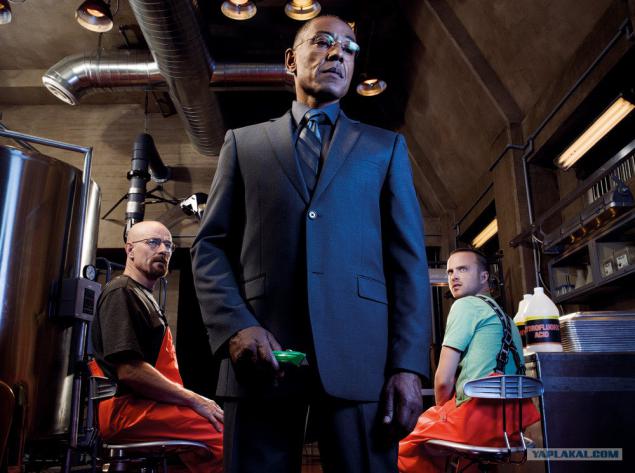
Q. What would you say is the brand foreshortening "Breaking Bad»?
A. Very broad general plans, people often referred to as our proprietary chip. Directed by and say, "Let's make a wide angle as" all serious ", because this is a rare television reception. Vince really like to shoot wide general plans, and sometimes I also like these angles - it puts the hero of the film at a particular location or scene that tells you something about the own character of the surrounding space. So I look at the big plans as story-telling device. Another technique, characteristic of this series, when something big is placed in the foreground, with something more importance is placed on the back burner. We call such a wide angle and closed. For example, you might see in the foreground of a wad of money, and our heroes are doing something in the background. Being unable to focus or a much smaller object in the foreground.
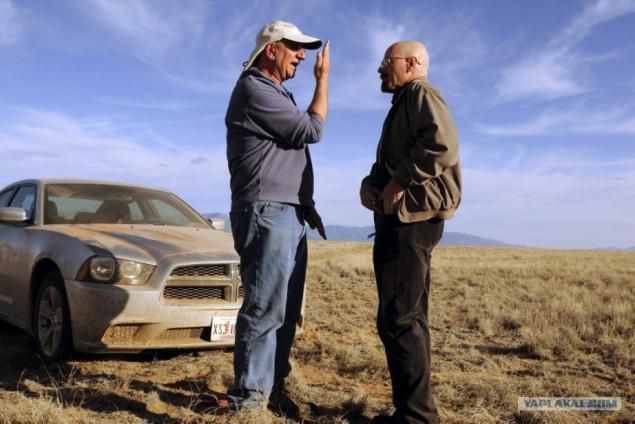
B. There are times when you during the filming process so immersed in the game or actors that you forget to pay attention to the technical side of what is happening?
A. My job is not only to expose the lighting and camera angles, but make sure it's lighting and camera angles reflect the stage the most effective way. If I am moved by what I see, I know that we have done well. I have assistants who manage the cameras and lights. All these people follow the technical details, but I am concerned only storytelling. That's what interests me in my work: an effective and impressive narration.
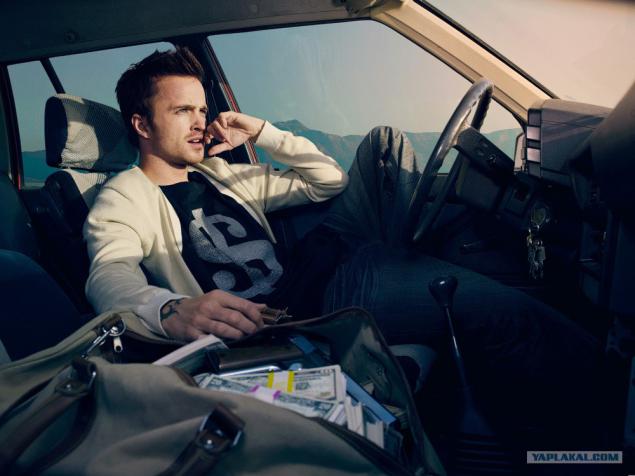
...
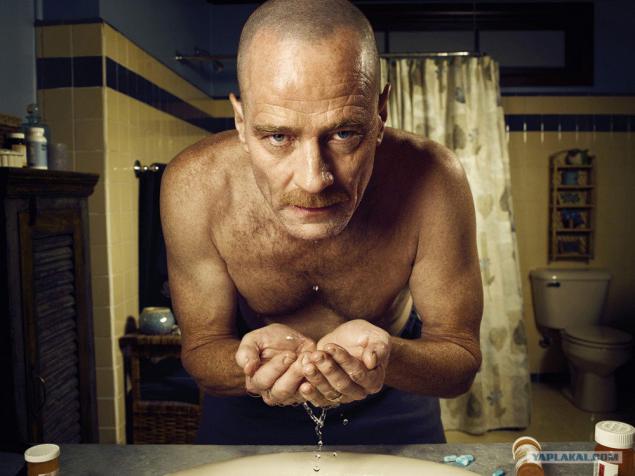
...
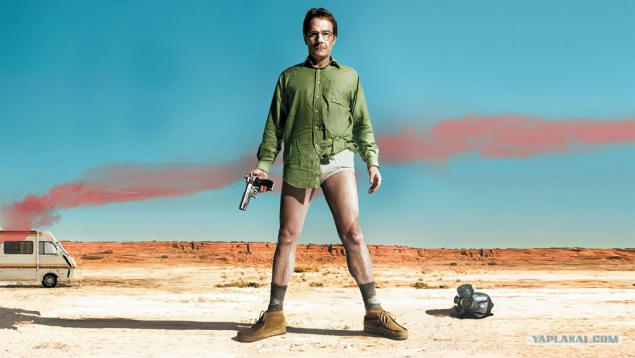
Everyone who watched "Breaking Bad," certainly paid attention to the gorgeous desert scenery in the Indian reservation. They appear in the episodes often, sometimes in the form taymlapsov. Perhaps even in any movie I have not seen so many cool taymlapsov. Actress Anna Gunn, who plays the wife of Walter (Skyler - ed.), Grew up in New Mexico and in an interview said: "Every time I come here, I always think that light in New Mexico is different from other places, and Michael Slovis does a great job, taking them to the show. " Michael takes a certain film Kodak, and also uses a set of filters True-Pols from Schneider Optics, the stage to add a special shade of brown, or tea.
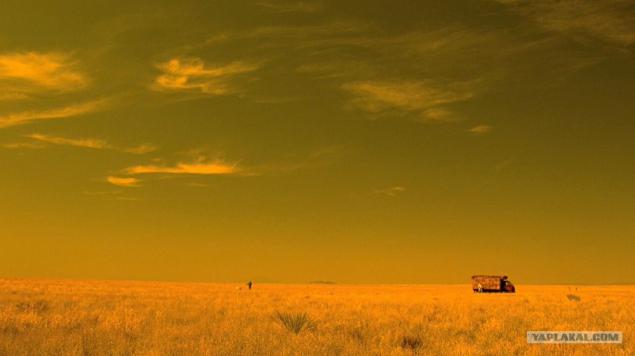
...
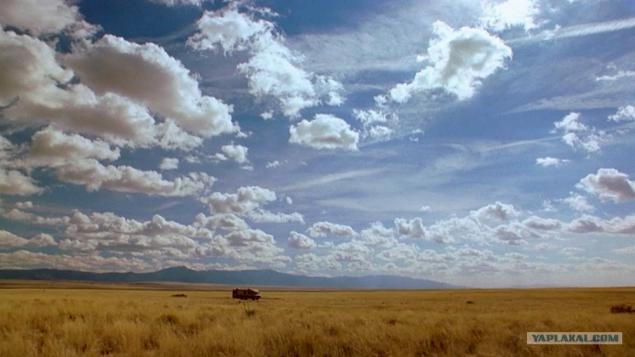
...
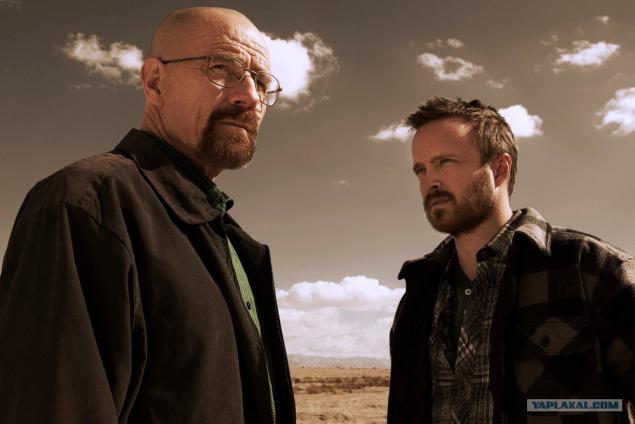
Vince Gilligan about the operators of the series "Breaking Bad": John Toll (John Toll), who directed the pilot series was amazing. Then Villelobos Ray (Ray Villalobos) filmed the first season, and when he left, one of our directors nominated Michael Slovisa because of his skill and speed work. Many people say that you can remove, or a good show, or fast, but I think Michael - the exception that proves the rule. He is a true artist, and at the same time is fast as lightning.
I told him I did not want to "all serious" standard soft lighting, which is made on the television. I do not want to see to see everything in every corner. Michael asked, "Are you absolutely sure?" I said, "Think of" The Godfather "as a good example - the same shade as there are light & quot ;. And he said: "It's wonderful."
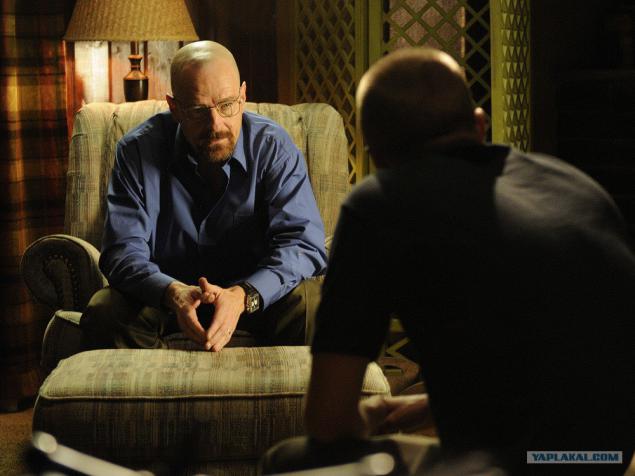
Slovis: After the first footage of me material called bosses of Sony Television: «What do you have there? Suddenly, the show has become so dark! "(Laughs). I was ready to pack his bags, thinking that I would be fired and go home to his wife. But Vince was in his, "This is what I want. Continuing in the same spirit. " A little later, the verdict rendered AMC: «It's beautiful." And finally called back from Sony and said, & quot; Ok, approved ".

Michelle Maklaran, executive producer, director: I came to orchestrate the episode "Four days" in the second season and it was a great experience for me. We wanted to show was filmed as a modern western. I'm a big fan of Sergio Leone and I love scenes shot with wide-angle lenses yarkovyrazhenny foreground and broad prospect in the background. That episode was shot in the desert, and I wanted to use a 14-millimeter lens. And Michael liked the idea. We immediately found a common language with him.
Slovis: I use a lot of broad blizkofokusnyh lenses. We have 14, 24 and 32-millimeter lens blizkofokusnye. We can remove droplets of water from a tap or bugs or something else in the foreground with visible and actors in the background. We can easily put the spotlight or bumper of the car, or even someone's eyes in the foreground and allow the movement of secondary importance to be out of focus, or vice versa, allowing the foreground to be out of focus, and the rear - to be sharp. We're not doing this just to be unusual. Vince and all of us who worked on the show, assured that this technique we need to have a good and accurately tell the story.
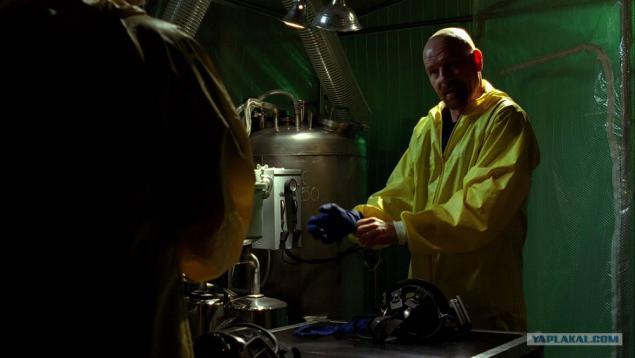
Slovis: I like to take all of that will match the palette of the story. But AMC wanted to show would be filmed, Vince loves film, and for me this is absolutely the right way to «Breaking Bad». Textures, sensitivity, contrast range, the manner in which recorded light (highlights). All of this helps a lot of storytelling with this kind of volume.
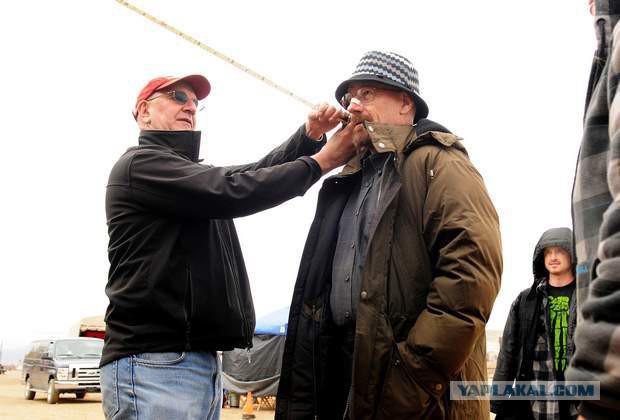
In addition, we slightly "fry» (burn) image. I have an extensive package of filters that I use to get certain colors. But I do not do broad-spectrum log-c or s-log transfers (not able to, what kind of treatment processes - approx.). Colorist only a few draws fine brush, without making a serious color correction for each scene. Footage by 95 percent is ready for viewing without any processing.
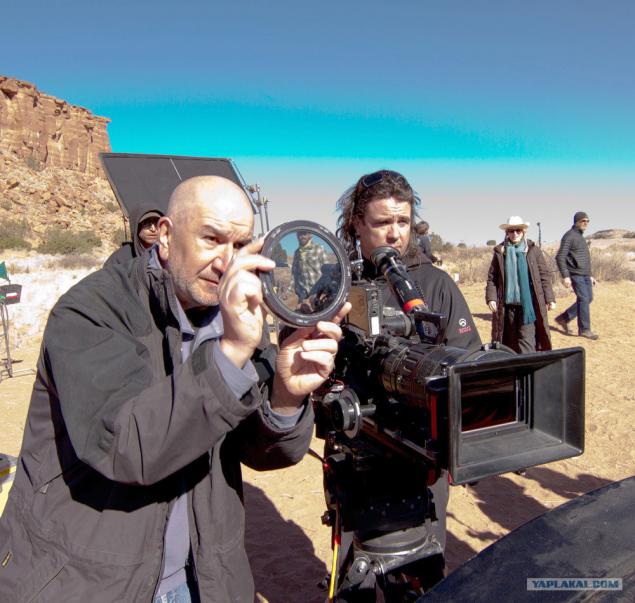
McLaren, one of the producers of the series: In the first season, being a director, I wanted to shoot a scene where Walt and Pinkman prepared for cooking in front of his trailer (RV). Filming had to be at sunset, but we have lost the light. Michael silently took the filter, put it on the lens, and get a beautiful picture of the sunset. If you were there at the time, one would have thought that the light was gone and the working day is over. But with its filter we got this magic.
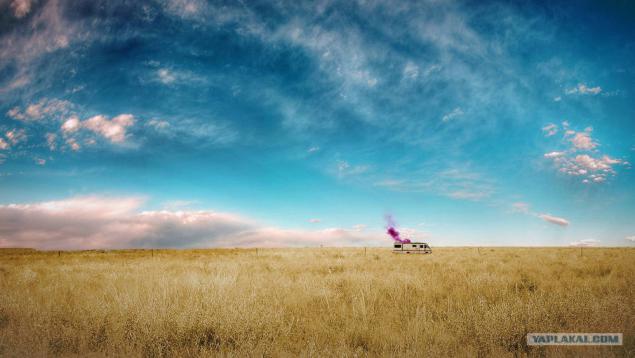
Slovis: Walter White House - we call it the "White House" - was in the movie from the beginning, but I'm trying to take it off the interior in such a way that the viewer could feel that he was under pressure. I always try to add pressure on our heroes visually, and if the scene progresses, you will see this more and more.
Litecky: Mainly for the filming of the house, we use hard light coming from the outside, with very little fill light. When we shoot close-ups, this is a delicate moment (especially for women), but we have quite normally illuminate Walter only on one side, and the area around the highlight 4 foot or less just put a very bright light on someone from the chest down and leave the actor's face is almost in the shadows.
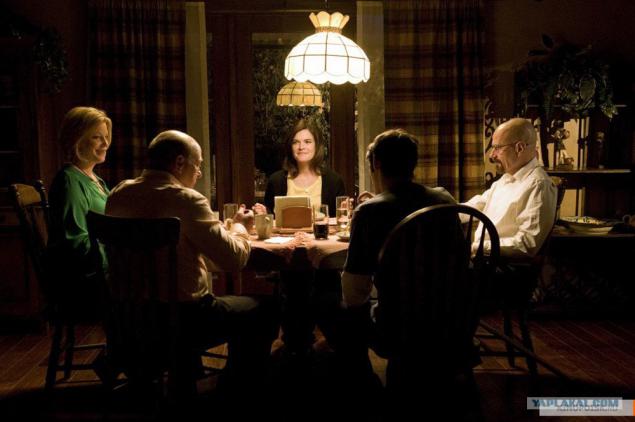
Slovis: We often put the camera in some unusual places, which has long been a chip series. Sometimes the director comes up with the idea, but after reading the script, and often on the fields and it is written: "And now, one of our patented POV.»

McLaren: In episode 4.02, I decided to put the camera on a round robot cleaner «Roomba». Imagine - the morning after a big party and you see Rumba in the foreground, and he is trying to get out of the room, circling littering sedated guests. This POV (opinion) of the vacuum cleaner, which may seem strange, but it tells the story of this great party and burn all who came here at night. Vince also supported this idea, and Mike was able to persuade the bosses and all implemented with his team.
Slovis: Basically, "Breaking Bad" I shoot 35 millimeters, but sometimes we are experimenting with digital cameras. We used a DSLR Canon 5D and 7D. To Rumba we attached Panasonic HVX 200A.
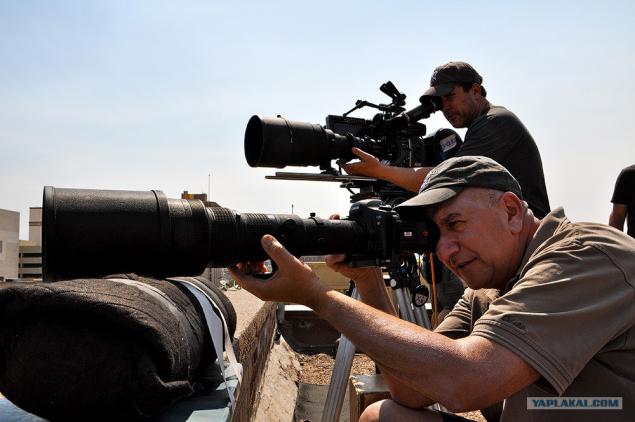
Slovis: Many of these unusual techniques and scenes that have become iconic, requires talent and skills of each team member. On one of the episodes that I directed, we put on the 7D SLR shovel, and we can see in the picture shovel and back Pinkmana that fits and starts to dig. There is no ready equipment, which could be hired for this frame. And no one is ready to tell the way.
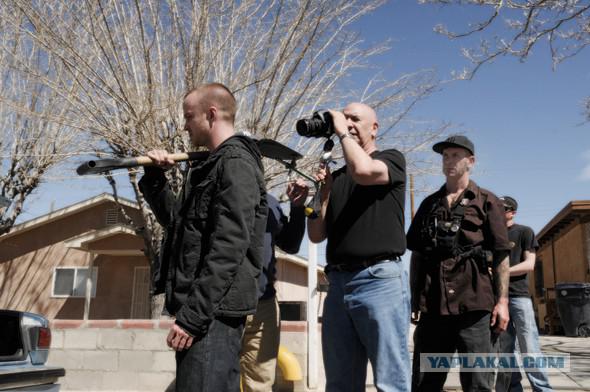
If you want to see the bottom, someone breaks Yorshik clogged toilet, Design Bureau should make a backup of a 10-feet tall and a floor made of plexiglass. Then you need to make sure that the decorations are securely fastened to the beautiful transparent floor, and the toilet is not leaking anywhere. Then he pours water special effects department. Meanwhile, I have to make sure that there is no glare or reflections on the Plexiglas.
Vince Gilligan about the use of flashbacks and transfer of the plot of the time we do not add a sepia tone to historical scenes or blue tone to move in time, because the various storylines are based more on geography rather than chronology. For example, in the third season of many moments took place south of the border with Mexico, and Michael had the idea of strengthening some of the colors. He added a special filter on the camera and thus the scene of Mexico have turned to gold or straw color. And it was one of the series of visual idioms.
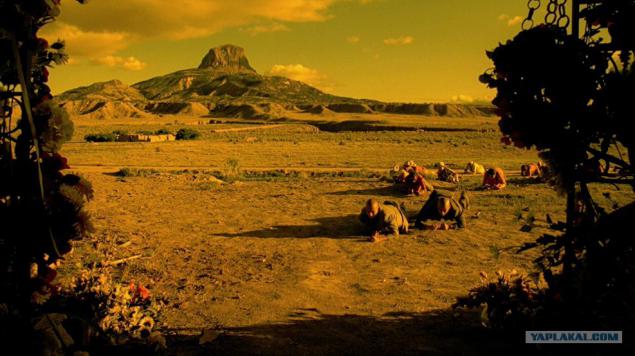
McLaren: Michael lighting scenes originally were dark and in many ways became even darker during the series. Michael loves the darkness. He loves silhouettes. Moreover, history itself becomes more intense and tough, so it makes sense, if the visuals even emphasize it. He made the show even darker as the story itself is becoming increasingly grim. And we just said, "Do it for him."
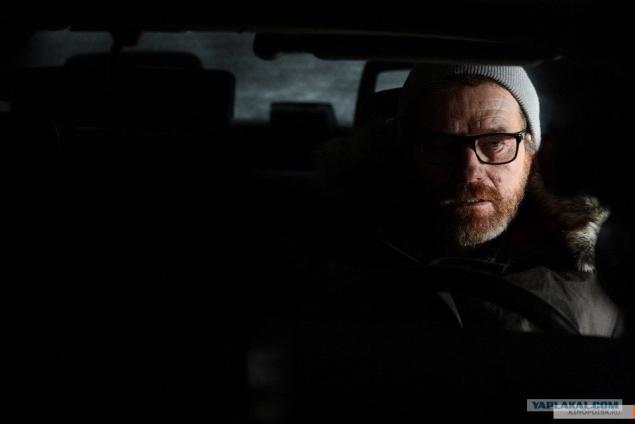
+ Bonus
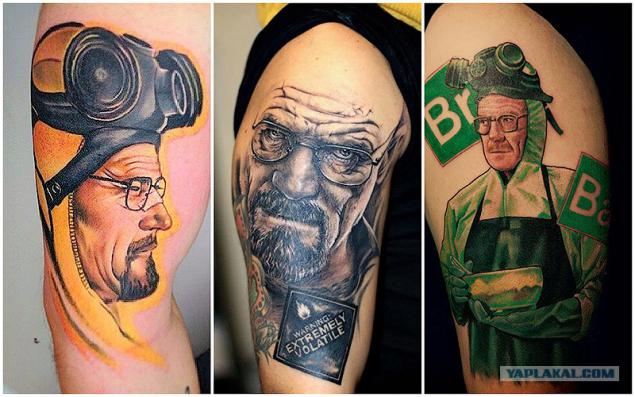
His style)
Posted in [mergetime] 1398238305 [/ mergetime]
Given the primary age of those who arrive on Yap and it shows statistics (saw somewhere) about 30 + - 5 years, the series should know, perhaps this is the best project on the TV for the past 5 years, and ratings of proof ... project which is almost nothing inferior to multi-million dollar blockbusters.
That's all I wanted to say.
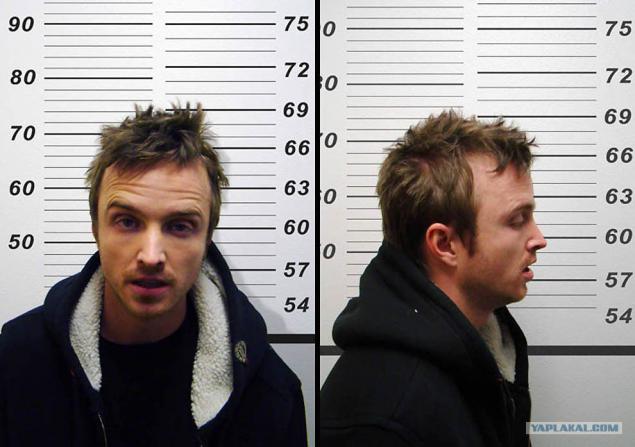
Source:
The series received the "Emmy" in 2008, 2009, 2010, 2012 and 2013, including the prestigious "Best Actor in a Drama Series" (2008, 2009, 2010) and "Outstanding Drama Series" (2013). Currently the show is over, and consists of 62 episodes.
In addition to the great game of actors, cool script, and other factors that allow us to say that the film came to like it, I literally crush on operator solutions that have been used in "all serious". The credit for this major operator show - Michael Slovisa.
Will be 30 photos + text source.

Michael Slovis (Michael Slovis) started taking pictures as a teenager, and once won a photo contest on the small-town «New Jersey State Teen Arts Festival». The victory gave him the opportunity for further training at the well-known program fotoremeslu Rochester Institute of Technology. Later Slovis studied cinema at New York University and began to look for jobs on the set of a movie lighter, as well as various advertising and television commercials.
Since 1995 Slovis (already as the chief operator) takes off as an independent film and television projects and theatrical films. After returning from Europe after the injury, which occurred in 2001, Michael decided to find a job closer to home and family. And he was lucky to get a survey serials for the company Paramount / NBC. Two and a half years, Michael was the operator of the series «CSI: Crime Scene Investigation." For this work, in 2006 he received the "Emmy" for outstanding cinematography, and just a year later was nominated again. Since 2008 Slovis began work with the TV channel AMC, the second season by becoming the main operator of the series "Breaking Bad," for which he earned two nominations "Emmy". By the way, in some episodes, Michael made and as a director. In 2010 Slovis received an invitation to join the American Society of Cinematographers, which could not refuse. Slovis lives in New Jersey with his wife Maria. They have three grown children, the youngest of whom are now in college.

Q. In the last season are used any different from the previous season of cinematic imaging methods?
A. Vince (Vince Gilligan - writer, director and producer of the series - ed.) And I am always inclined to shoot in the gloom. And in terms of the full palette we shoot really dark. This does not mean that the viewer sees nothing. This means that we have a lot of black in the picture. This gives the frame contrast. One of the advantages of filming the show for five or six years - that we all know who these characters are. Thus, I do not have to cover their faces all the time. If a bald man about six feet tall comes in to the room, you know, it's Walter Uyat. We all know who these people are, so it gives me a lot more freedom than I had at the beginning of filming.

Q. Over the years, "Breaking Bad" was recognized for its "firm" carrier-chips. This broad general plans in the desert, unusual angles POV (Point of view shot. Did not find the Russian analogue of the cinematic term. Simplifying, this is the moment in the movie when you see what is happening through the eyes of the main character. Many of this technique is familiar to porn films genre gonzo - ca. .) and other techniques. You have a list of what you need this to pay tribute in the final episodes?
A. It's a good topic and I could talk about it for hours. The fact is that I do not always find appropriate techniques such shooting. I think they work best when used sparingly. If they are constantly appearing, you kind of have to expect them to start and the effect of the impact will be much less. But if POV appears in the frame at a time when you least expect it - it's really worth it.

Q. Why on television nobody makes films such as the level of "Breaking Bad»?
A. It's not that no one else so can not, rather it is we are doing it very well. And we are doing so well because of the good scenario. As the main operator is - what I'm interested in. I want people to see the film and said it was really nice, but I do not want people to look and say, "Stop, here a beautiful picture dominates sense!" What I love about working on this show - is his action. The storyline is so strong, so completely designed and made on a solid basis of the drama that it is opposed to even a very strong pictures. And that's why I'm doing it wrong. Sometimes, I worked on the show, where it was necessary to shoot at a very weak script. And it's very boring.

B. After five seasons of "Breaking Bad," Can you name the most successful stage and perspective?
A. You are asking me to pick a favorite child. I can not do this! Many people have tried, but ... In fact, one of my favorite moments - this is one of the most simple and it does not use anything special with photographic point of view. It was the episode where we were shooting a close-up Brian (Bryan Cranston - actor, singer starring. - Approx), when he allowed the heroine actress Krysten Ritter (freaky girlfriend Pinkmana - approx.) To die, the very moment when he takes this complex decision. I just thought at the time: "This is - movies. It is everything that the film should be ».

Q. What would you say is the brand foreshortening "Breaking Bad»?
A. Very broad general plans, people often referred to as our proprietary chip. Directed by and say, "Let's make a wide angle as" all serious ", because this is a rare television reception. Vince really like to shoot wide general plans, and sometimes I also like these angles - it puts the hero of the film at a particular location or scene that tells you something about the own character of the surrounding space. So I look at the big plans as story-telling device. Another technique, characteristic of this series, when something big is placed in the foreground, with something more importance is placed on the back burner. We call such a wide angle and closed. For example, you might see in the foreground of a wad of money, and our heroes are doing something in the background. Being unable to focus or a much smaller object in the foreground.

B. There are times when you during the filming process so immersed in the game or actors that you forget to pay attention to the technical side of what is happening?
A. My job is not only to expose the lighting and camera angles, but make sure it's lighting and camera angles reflect the stage the most effective way. If I am moved by what I see, I know that we have done well. I have assistants who manage the cameras and lights. All these people follow the technical details, but I am concerned only storytelling. That's what interests me in my work: an effective and impressive narration.

...

...

Everyone who watched "Breaking Bad," certainly paid attention to the gorgeous desert scenery in the Indian reservation. They appear in the episodes often, sometimes in the form taymlapsov. Perhaps even in any movie I have not seen so many cool taymlapsov. Actress Anna Gunn, who plays the wife of Walter (Skyler - ed.), Grew up in New Mexico and in an interview said: "Every time I come here, I always think that light in New Mexico is different from other places, and Michael Slovis does a great job, taking them to the show. " Michael takes a certain film Kodak, and also uses a set of filters True-Pols from Schneider Optics, the stage to add a special shade of brown, or tea.

...

...

Vince Gilligan about the operators of the series "Breaking Bad": John Toll (John Toll), who directed the pilot series was amazing. Then Villelobos Ray (Ray Villalobos) filmed the first season, and when he left, one of our directors nominated Michael Slovisa because of his skill and speed work. Many people say that you can remove, or a good show, or fast, but I think Michael - the exception that proves the rule. He is a true artist, and at the same time is fast as lightning.
I told him I did not want to "all serious" standard soft lighting, which is made on the television. I do not want to see to see everything in every corner. Michael asked, "Are you absolutely sure?" I said, "Think of" The Godfather "as a good example - the same shade as there are light & quot ;. And he said: "It's wonderful."

Slovis: After the first footage of me material called bosses of Sony Television: «What do you have there? Suddenly, the show has become so dark! "(Laughs). I was ready to pack his bags, thinking that I would be fired and go home to his wife. But Vince was in his, "This is what I want. Continuing in the same spirit. " A little later, the verdict rendered AMC: «It's beautiful." And finally called back from Sony and said, & quot; Ok, approved ".

Michelle Maklaran, executive producer, director: I came to orchestrate the episode "Four days" in the second season and it was a great experience for me. We wanted to show was filmed as a modern western. I'm a big fan of Sergio Leone and I love scenes shot with wide-angle lenses yarkovyrazhenny foreground and broad prospect in the background. That episode was shot in the desert, and I wanted to use a 14-millimeter lens. And Michael liked the idea. We immediately found a common language with him.
Slovis: I use a lot of broad blizkofokusnyh lenses. We have 14, 24 and 32-millimeter lens blizkofokusnye. We can remove droplets of water from a tap or bugs or something else in the foreground with visible and actors in the background. We can easily put the spotlight or bumper of the car, or even someone's eyes in the foreground and allow the movement of secondary importance to be out of focus, or vice versa, allowing the foreground to be out of focus, and the rear - to be sharp. We're not doing this just to be unusual. Vince and all of us who worked on the show, assured that this technique we need to have a good and accurately tell the story.

Slovis: I like to take all of that will match the palette of the story. But AMC wanted to show would be filmed, Vince loves film, and for me this is absolutely the right way to «Breaking Bad». Textures, sensitivity, contrast range, the manner in which recorded light (highlights). All of this helps a lot of storytelling with this kind of volume.

In addition, we slightly "fry» (burn) image. I have an extensive package of filters that I use to get certain colors. But I do not do broad-spectrum log-c or s-log transfers (not able to, what kind of treatment processes - approx.). Colorist only a few draws fine brush, without making a serious color correction for each scene. Footage by 95 percent is ready for viewing without any processing.

McLaren, one of the producers of the series: In the first season, being a director, I wanted to shoot a scene where Walt and Pinkman prepared for cooking in front of his trailer (RV). Filming had to be at sunset, but we have lost the light. Michael silently took the filter, put it on the lens, and get a beautiful picture of the sunset. If you were there at the time, one would have thought that the light was gone and the working day is over. But with its filter we got this magic.

Slovis: Walter White House - we call it the "White House" - was in the movie from the beginning, but I'm trying to take it off the interior in such a way that the viewer could feel that he was under pressure. I always try to add pressure on our heroes visually, and if the scene progresses, you will see this more and more.
Litecky: Mainly for the filming of the house, we use hard light coming from the outside, with very little fill light. When we shoot close-ups, this is a delicate moment (especially for women), but we have quite normally illuminate Walter only on one side, and the area around the highlight 4 foot or less just put a very bright light on someone from the chest down and leave the actor's face is almost in the shadows.

Slovis: We often put the camera in some unusual places, which has long been a chip series. Sometimes the director comes up with the idea, but after reading the script, and often on the fields and it is written: "And now, one of our patented POV.»

McLaren: In episode 4.02, I decided to put the camera on a round robot cleaner «Roomba». Imagine - the morning after a big party and you see Rumba in the foreground, and he is trying to get out of the room, circling littering sedated guests. This POV (opinion) of the vacuum cleaner, which may seem strange, but it tells the story of this great party and burn all who came here at night. Vince also supported this idea, and Mike was able to persuade the bosses and all implemented with his team.
Slovis: Basically, "Breaking Bad" I shoot 35 millimeters, but sometimes we are experimenting with digital cameras. We used a DSLR Canon 5D and 7D. To Rumba we attached Panasonic HVX 200A.

Slovis: Many of these unusual techniques and scenes that have become iconic, requires talent and skills of each team member. On one of the episodes that I directed, we put on the 7D SLR shovel, and we can see in the picture shovel and back Pinkmana that fits and starts to dig. There is no ready equipment, which could be hired for this frame. And no one is ready to tell the way.

If you want to see the bottom, someone breaks Yorshik clogged toilet, Design Bureau should make a backup of a 10-feet tall and a floor made of plexiglass. Then you need to make sure that the decorations are securely fastened to the beautiful transparent floor, and the toilet is not leaking anywhere. Then he pours water special effects department. Meanwhile, I have to make sure that there is no glare or reflections on the Plexiglas.
Vince Gilligan about the use of flashbacks and transfer of the plot of the time we do not add a sepia tone to historical scenes or blue tone to move in time, because the various storylines are based more on geography rather than chronology. For example, in the third season of many moments took place south of the border with Mexico, and Michael had the idea of strengthening some of the colors. He added a special filter on the camera and thus the scene of Mexico have turned to gold or straw color. And it was one of the series of visual idioms.

McLaren: Michael lighting scenes originally were dark and in many ways became even darker during the series. Michael loves the darkness. He loves silhouettes. Moreover, history itself becomes more intense and tough, so it makes sense, if the visuals even emphasize it. He made the show even darker as the story itself is becoming increasingly grim. And we just said, "Do it for him."

+ Bonus

His style)
Posted in [mergetime] 1398238305 [/ mergetime]
Given the primary age of those who arrive on Yap and it shows statistics (saw somewhere) about 30 + - 5 years, the series should know, perhaps this is the best project on the TV for the past 5 years, and ratings of proof ... project which is almost nothing inferior to multi-million dollar blockbusters.
That's all I wanted to say.

Source:
